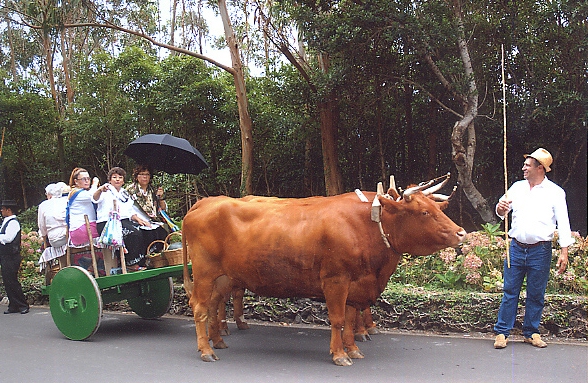The Ramo Grande is a breed of cattle that hails from the island of Terceira in the Azores, an archipelago off the coast of Portugal. It is named after the plain in the municipality of Praia da Vitória, called Ramo Grande, where the finest examples of this large-format cattle breed can still be found today.
The breed is a result of the early cattle that settlers brought to the island in the 15th century from Portugal and Flanders, which included Alentejan, Mirandese, Minhotan, and Algarvian breeds. Over the centuries, these breeds adapted to the local conditions and became the Ramo Grande. Historically, this breed was used for agricultural work, transportation, and as a source of meat and milk.
However, with the advent of mechanized agriculture, the breed's traditional role as a beast-of-burden diminished, and dairy and beef cattle breeds took its place. By the late 20th century, there was a resurgence of interest in preserving the Ramo Grande, and a technical specification for the pure breed was established in 1996. This helped increase the number of registered animals from 227 in 1996 to 546 in 2004.
The Ramo Grande breed is characterized by a large head, little forelock, and a slightly prominent frontal protuberance with a convex profile. Its curved horns extend back, then sideways before curving forward, with points that end vertically. It has a large trunk, less developed hindquarters, and a slightly arched quarter, and is known for its long joints and sturdy hooves. Its coat is a reddish-brown matte, which is more or less intense in different areas.
The breed's natural habitat is in the northeast corner of Terceira, along the fertile Ramo Grande plain. Today, it is popular throughout the Azores and continues to be raised for ethnographic purposes, such as participating in ethnographic processions where the cattle pull traditional carts.
Content and photo source: Wikipedia.org

